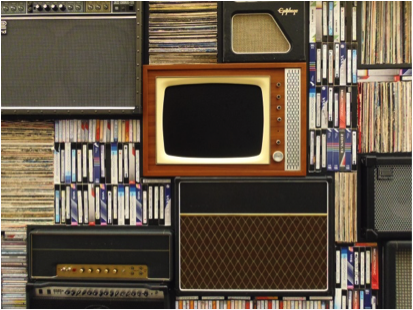The Comeback Kid: Retro Tech That’s Gaining Popularity Again
Dial-up phones, floppy disks, Gameboys. For many of us, these pieces of technology remind us of our childhood. But now, well into the 21st century, the traditional tech we grew up with has been replaced by sleeker, more compact, and faster devices.
Technology that was once hailed for its ingenuity, like the iPod or standalone GPS, quickly became obsolete as new tech arrived. Or so we thought. While most of our childhood favorites are likely to stay in the past, a few have begun to resurge. Here are three of our favorite pieces of retro tech that’s making a comeback today:
The Polaroid Camera

When Edwin Land invented the Polaroid in 1945, he revolutionized photography by creating the first camera to print photos instantly. When digital cameras reached the market in the 1990s, they further transformed the industry, but this time at the expense of the iconic Polaroid. Digital cameras could take multiple photos in seconds, and allowed you to easily duplicate and share them countless times over. By the turn of the 21st century, Polaroid cameras had nearly been forgotten and the company was on the edge of bankruptcy.
But instead of fading away into history books as an ancient artifact, the Polaroid stuck around and has since earned its spot as a vintage camera. There is something magical about holding a clunky camera up to your eye, pressing the shutter, and printing out a unique photo.
This gadget’s comeback is not without a modern twist. While original-style Polaroid cameras are still for sale, many people buy updated models like the Polaroid Snap. The Snap has a microSD card that stores the user’s photos and has several filter options, including the beloved vintage sepia tone. In this sense, owners of a Polaroid Snap get the best of both worlds: a uniquely printed vintage photo and a digital copy to save and share online. Given its upward trend in popularity in recent years, it seems like Polaroid is here to stay.
Vinyl Records

Music has also made a swift return to its old-tech roots. With compact and portable devices like smartphones, iPods, and MP3 players, it’s hard to believe that a cumbersome disk with limited storage still remains popular. In fact, vinyl record sales have been on the rise, with a 260% increase from 2009 to 2015.
So what’s the secret to their success? Justin Pormeleau, owner of three vintage stores, believes that vinyl “fosters a connection between the listener and music that is difficult to achieve with digital.” It’s true that pulling a record out of its sleeve, hearing the needle scratch, and enjoying the warm melody emit from a record player is not quite the same as pressing play on a phone.
Just like the Polaroid, vinyl records today are slightly different than back in the 60s. Modern albums tend to be thicker and sound better than when vinyls were first introduced. Some turntables even come equipped with a USB port, allowing listeners to digitize their LP collections. While digital music still reigns supreme, vinyl continues to transform the listening experience for thousands of music lovers.
The Super Nintendo Entertainment System

Video game lovers need not feel left out either. Earlier this year, Nintendo announced the upcoming release of the Mini Super Nintendo Entertainment System (SNES). Complete with 21 pre-installed classic games and two controllers, the system stays true to its original design from the early 1990s.
An added bonus for those who buy the console is the never-before released game Star Fox 2 that was abandoned in 1995. Furthermore, the system’s HDMI cable allows players to get the full game effects on modern flat-screen TVs.
With such popularity today, it’s hard to believe the entire gaming industry almost went completely under. But Nintendo has managed to adapt to changes and loyal fans are eager to once again play the console they loved as children.
The Power of Nostalgia

So what exactly do Polaroid cameras, vinyl records, and Nintendo gaming consoles from the 90s have in common that led to their newfound success? The biggest factor is nostalgia.
Nostalgia marketing is a powerful strategy that relies on consumer emotion to drive action. And surprisingly, Millennials are the generation most affected by this strategy. So it’s no surprise that Millennials are the main demographic indulging in retro tech.
The real triumph for comeback products or brands occurs when they achieve a perfect balance between old and new, just like Polaroid, vinyl, and Nintendo have done. This balance tugs on the heartstrings without abandoning functionality and relevance for modern consumers.
Nostalgia marketing isn’t a guaranteed win though, and it’s not always the right strategy to pursue, but for some companies it could be their ticket to success.
Do you need help determining the right marketing strategy for your business? Media Genesis can help! We provide business consulting for strategic branding and development. Reach out to us on Facebook or Twitter or give us a call at 248-687-7888 for more information.


.png)
